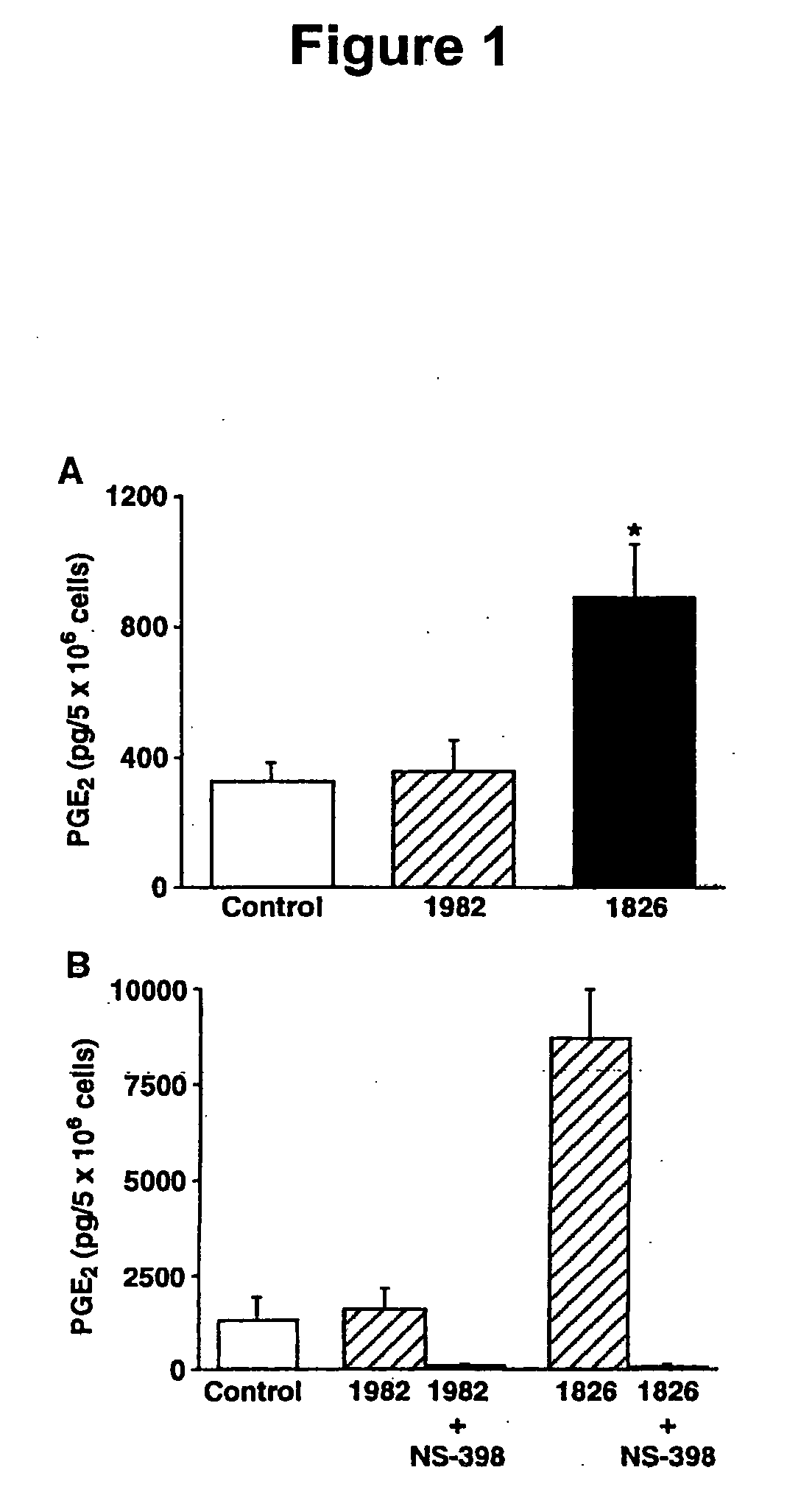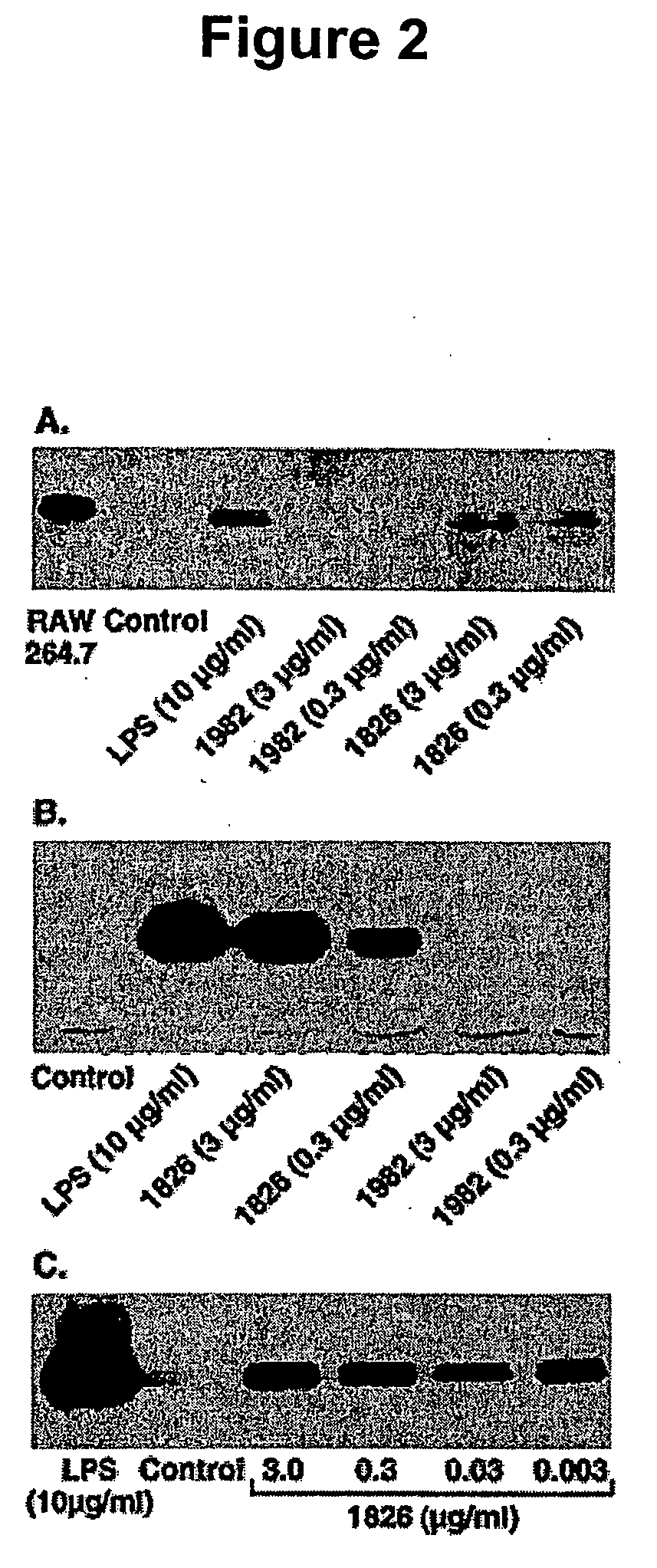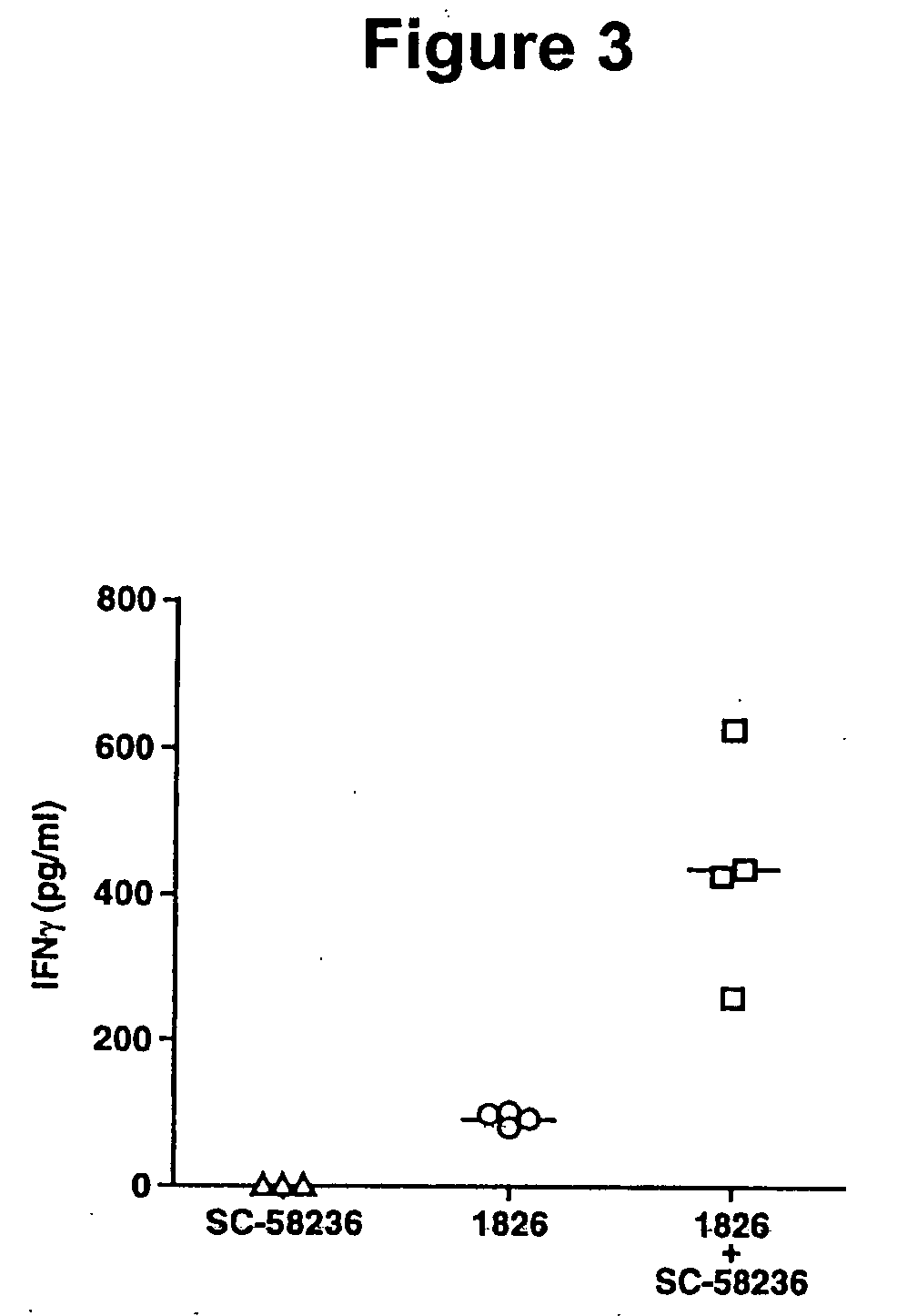Immunostimulatory nucleic acid for treatment of non-allergic inflammatory diseases
a technology non-allergic inflammatory diseases, applied in the field of immunomodulatory nucleic acids, can solve problems such as unwanted damage to uninvolved bystander cells, and achieve the effect of reducing or preventing non-allergic inflammation
- Summary
- Abstract
- Description
- Claims
- Application Information
AI Technical Summary
Benefits of technology
Problems solved by technology
Method used
Image
Examples
example 1
[0221] Characterization of PG production induced by immunostimulatory DNA. Presence of immunostimulatory ODN resulted in increased PGE2 production from both spleen cells (2.5-fold greater than control ODN; FIG. 1A) and the RAW macrophage cell line (5.4-fold greater than control ODN; FIG. 1B). The PGE2 produced was derived from COX-2 enzymatic activity as the COX-2 selective ODN-stimulated cells. Similar results were also obtained using the COX-2-selective inhibitor SC-58236. HPLC analysis of ODN-stimulated RAW cells demonstrated that PGE2 was the dominant eicosanoid induced by CpG DNA.
example 2
[0222] Immunostimulatory ODN induce COX-2 mRNA. RAW 264.7 macrophages were incubated with media or ODN (3 μg / ml) for varying time periods (0, 2, 4, 6 and 24 h) and RNA isolated for COX-2 expression using RPA. As shown in FIG. 2B, stimulatory ODN 1826 effectively increased COX-2 mRNA (6 h level was 21-fold greater than 0 h). In contrast, no significant increase in COX-2 message was seen using the non-stimulatory ODN 1982 (FIG. 2A). This analysis also demonstrated that COX-2 mRNA was rapidly induced in response to stimulatory ODN. Within 2 h the stimulatory ODN 1826 induced COX-2 mRNA expression and the COX-2 mRNA levels remained elevated over the 24-h time period (FIG. 2B).
example 3
[0223] Immunostimulatory ODN induces COX-2 protein expression. Spleen cells incubated with stimulatory ODN had increased expression of COX-2 protein, whereas non-stimulatory ODN did not induce COX-2 expression. Stimulation of RAW 264.7 cells with stimulatory ODN 1826 also resulted in a marked induction of COX-2 protein, while no induction was seen using the control ODN 1982. Stimulatory ODN was an extremely potent inducer of COX-2 protein in RAW 264.7 macrophages as amounts as low as 3 ng / ml effectively induced COX-2 protein expression. In contrast, neither stimulatory nor control ODN altered the level of protein expression of COX-1.
PUM
| Property | Measurement | Unit |
|---|---|---|
| pH | aaaaa | aaaaa |
| time | aaaaa | aaaaa |
| concentration | aaaaa | aaaaa |
Abstract
Description
Claims
Application Information
 Login to View More
Login to View More - R&D
- Intellectual Property
- Life Sciences
- Materials
- Tech Scout
- Unparalleled Data Quality
- Higher Quality Content
- 60% Fewer Hallucinations
Browse by: Latest US Patents, China's latest patents, Technical Efficacy Thesaurus, Application Domain, Technology Topic, Popular Technical Reports.
© 2025 PatSnap. All rights reserved.Legal|Privacy policy|Modern Slavery Act Transparency Statement|Sitemap|About US| Contact US: help@patsnap.com



